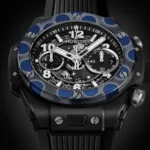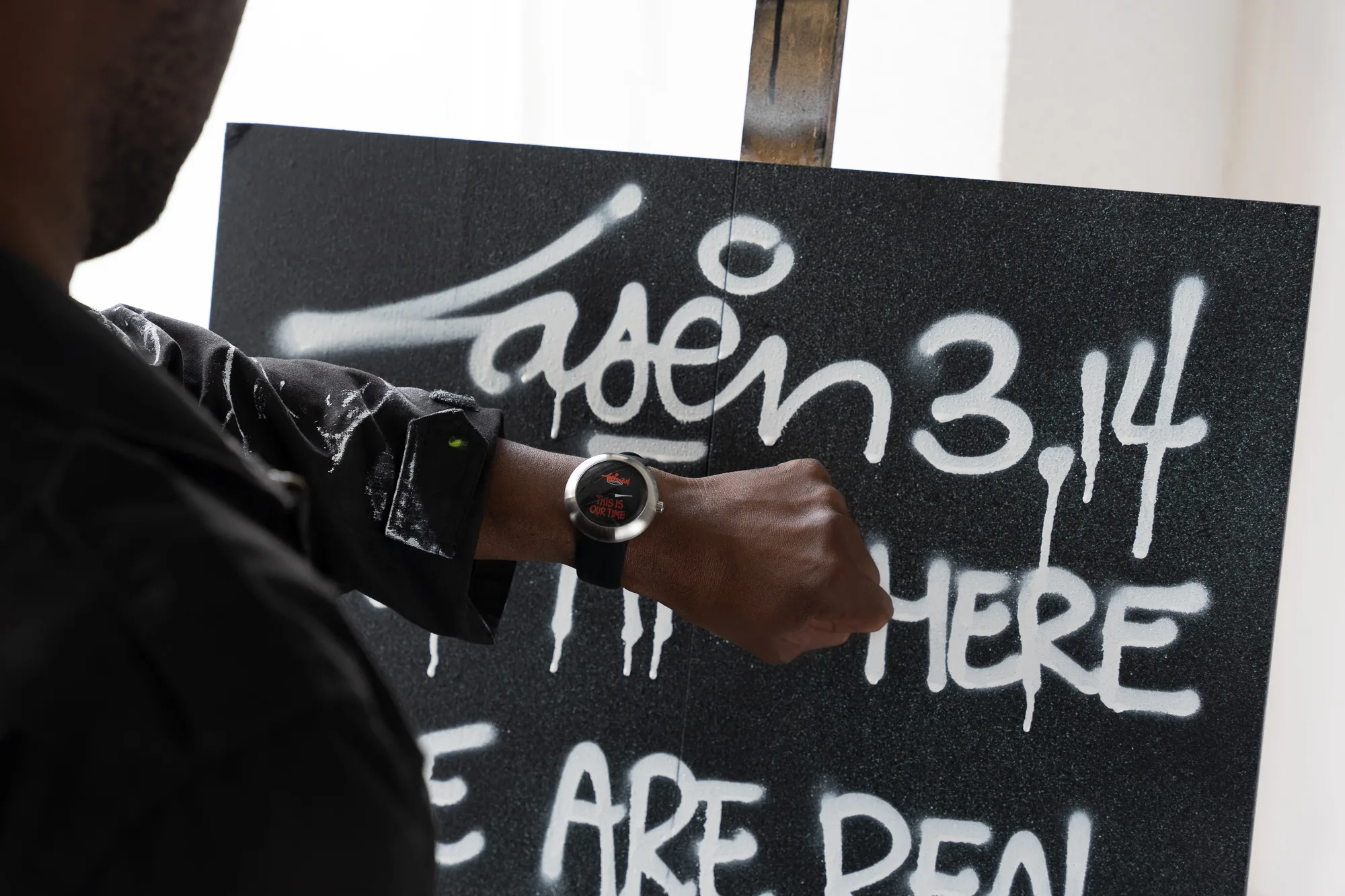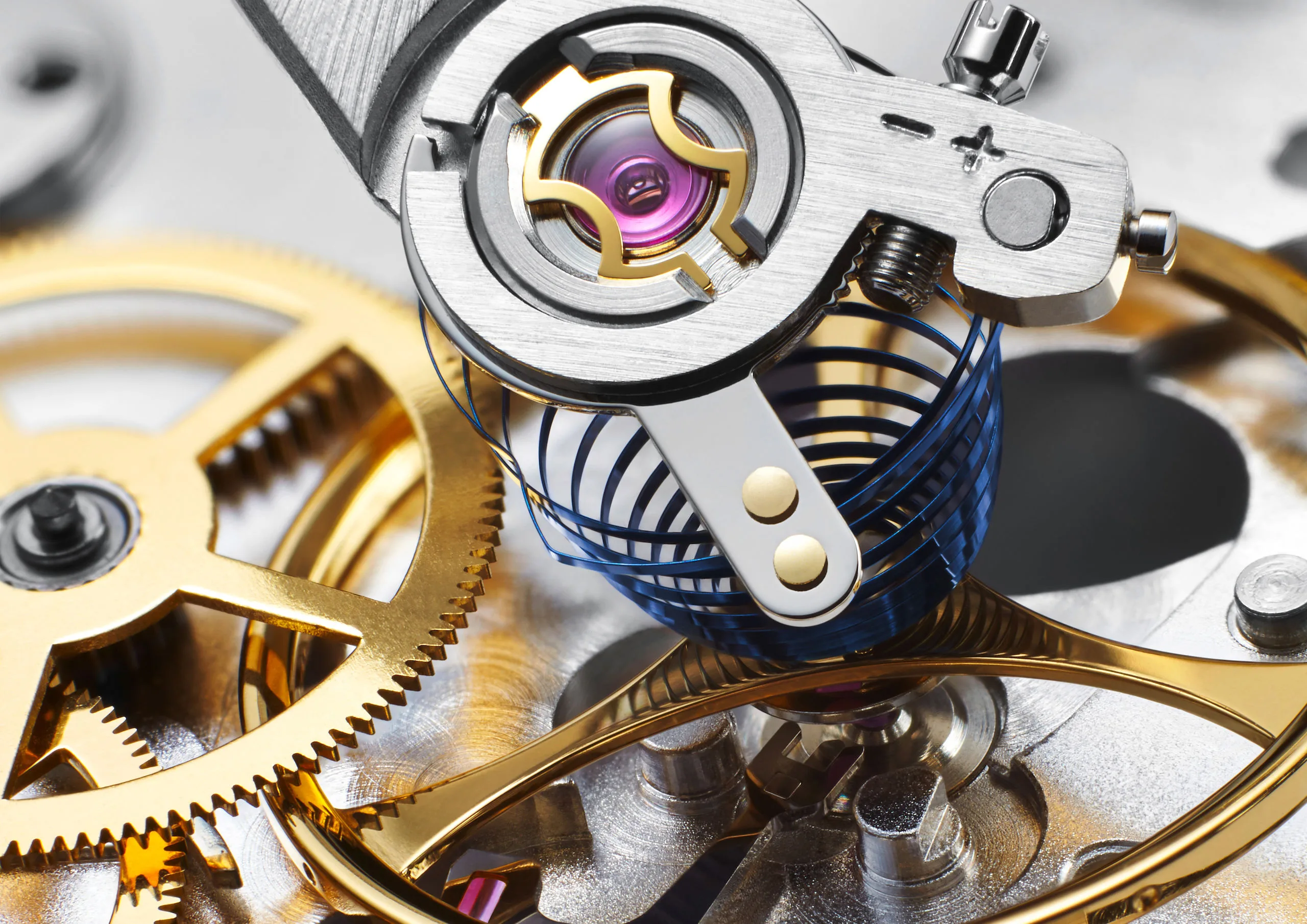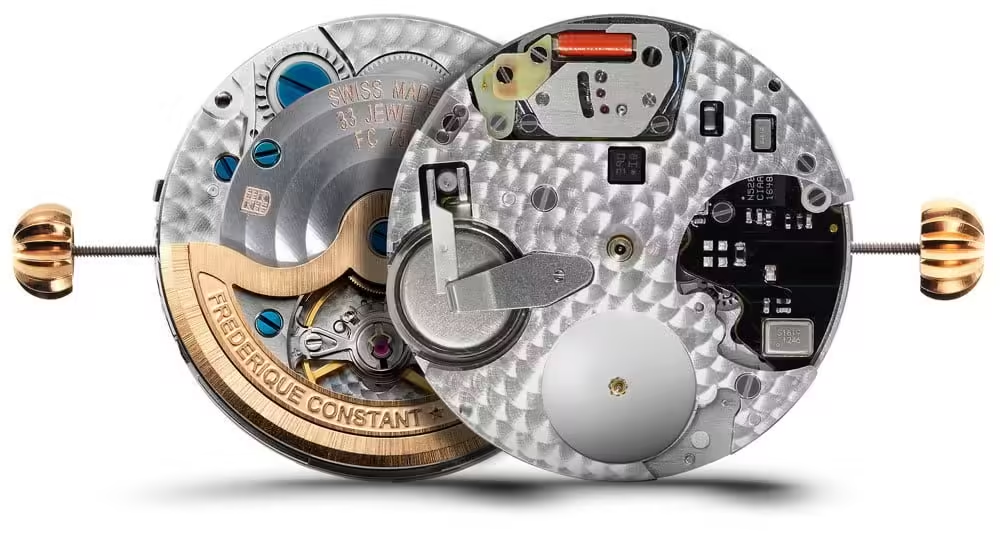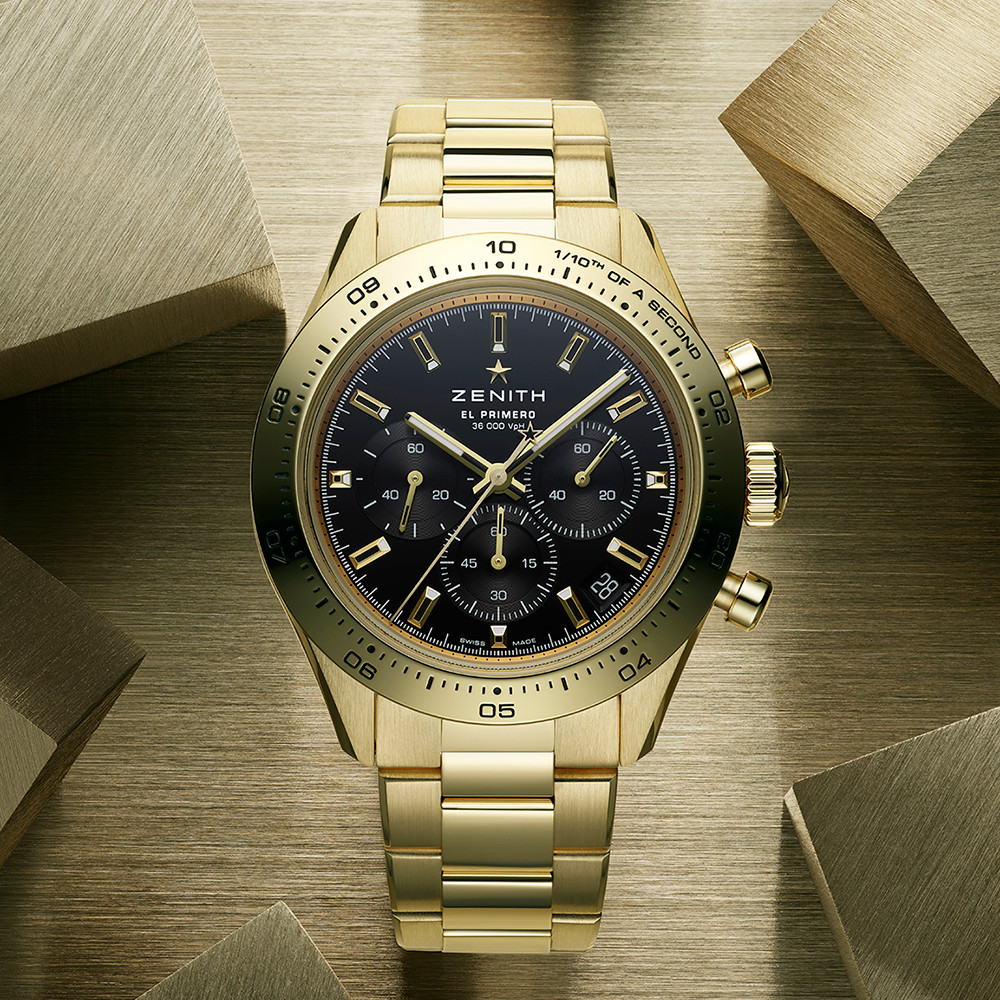The Tourbillon Cardan represents a pioneering leap in achieving unparalleled chronometric precision, employing a fusion of three fundamental principles. Firstly, the concept of the tourbillon, originating from Abraham-Louis Breguet’s 1801 patent, was crafted to rectify variations in timekeeping accuracy, particularly in vertical orientations. However, for Greubel Forsey, this marked not the culmination, but rather the inception of their journey.
Diverging from the conventional 60-second revolution, the 8th Fundamental Invention’s tourbillon operates at an astonishing pace, completing a cycle in just 16 seconds, making it the fastest tourbillon ever by Greubel Forsey. This heightened speed enables it to traverse more positions in a shorter timeframe, resulting in substantially enhanced overall performance.
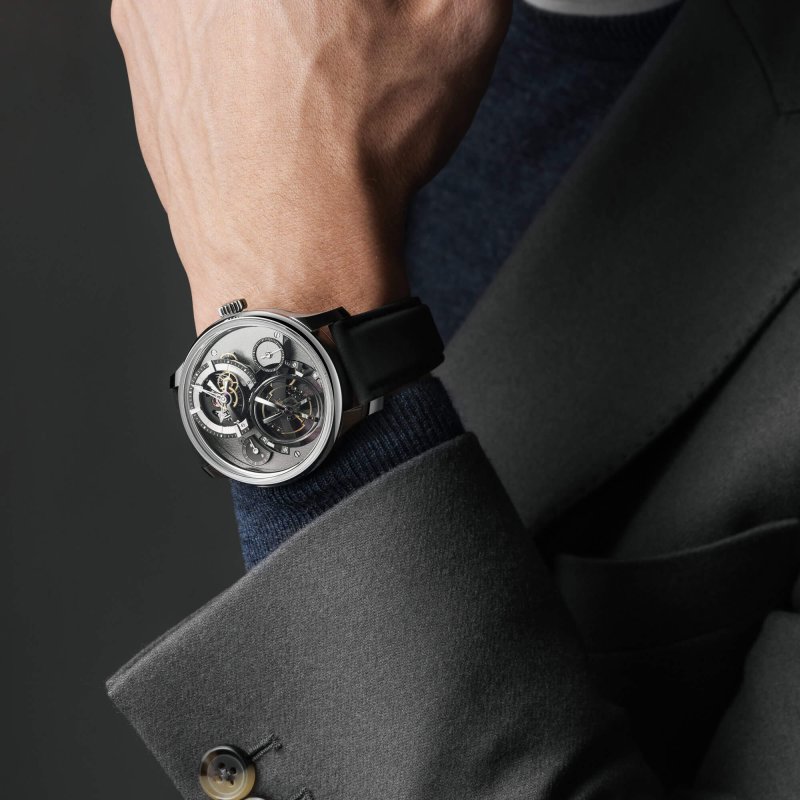
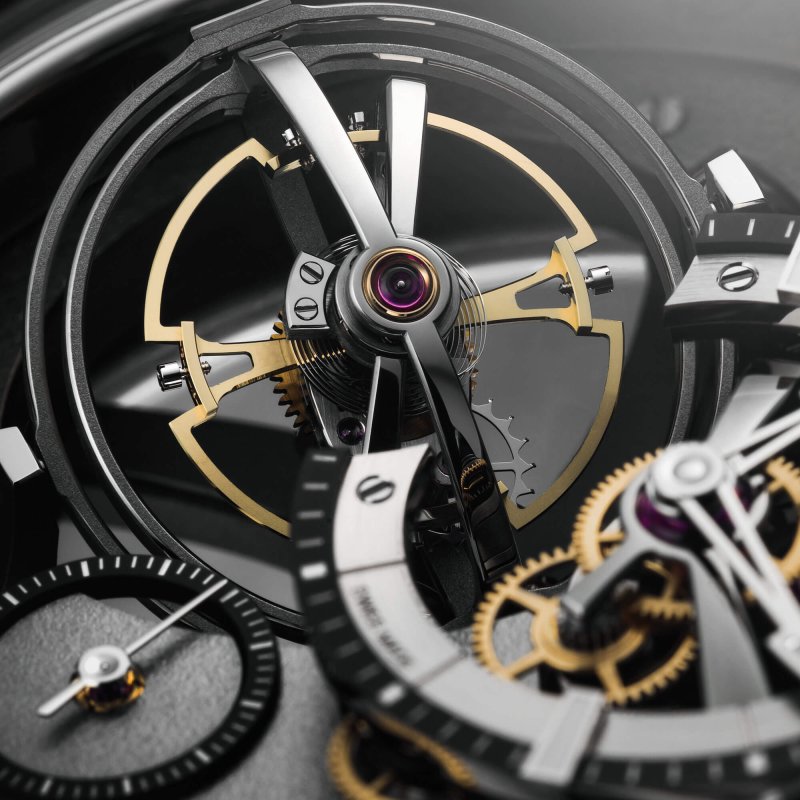
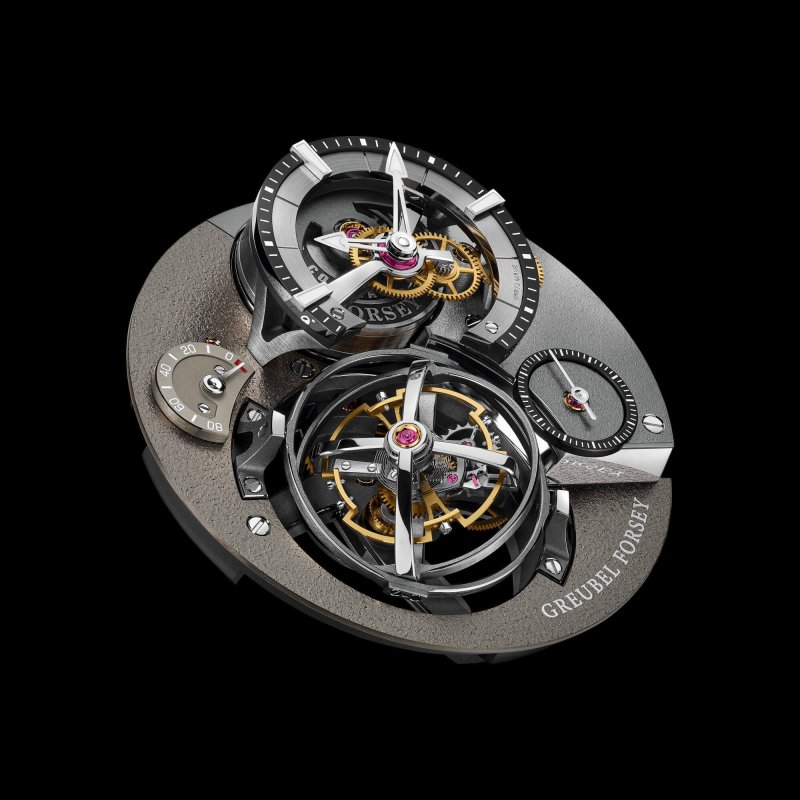
What’s truly groundbreaking is that this tourbillon introduces Greubel Forsey’s first-ever large in-house-designed balance wheel. Boasting meticulous mass distribution, substantial dimensions (12.6 mm), and optimized oscillations, this balance wheel’s high inertia renders it remarkably resilient to shocks and variations in speed.
The third pivotal principle revolves around the 30° high-speed tourbillon, guided by two mobile rings interconnected by two 90° axes. In a mere 48 seconds, these rings sway back and forth. While this arrangement may evoke thoughts of traditional gimbals, it significantly differs. Unlike conventional gimbals, where the rings aim to maintain a contained object’s horizontality, in the Tourbillon Cardan, the rings’ tilt is meticulously regulated within a range of +30° to -30°. Simultaneously, the tourbillon maintains a fixed inclination of 30°, consistently providing an improved ratio of angular velocity to chronometric precision.
A standout feature of the Tourbillon Cardan is its four coaxially stacked barrels, a rarity in Greubel Forsey’s craftsmanship, emerging only once in two decades. These barrels incorporate a slipping mainspring to avert excessive tension during winding, furnishing an impressive 80 hours of chronometric power reserve. Beyond this point, the timepiece continues to function admirably, albeit possibly outside the stringent precision thresholds upheld by Greubel Forsey.
For more information, please visit GreubelForsey.com.
